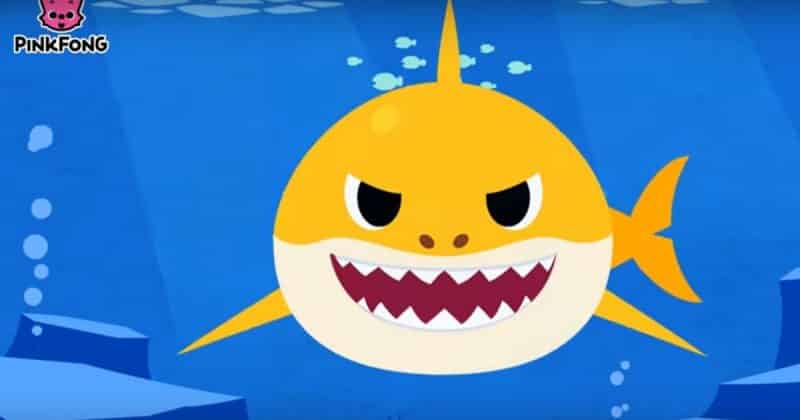Sciences Explains Why ‘Baby Shark’ Is Taking Over The Entire World

Last week we learned that Baby Shark, the catchy and annoying song our kids love, debuted at No. 32 on the Billboard 100. Just let that sink in. A song on YouTube created for children has cracked the top 100 songs in the country. And came in at a pretty decent spot! We’ve been trying to get Baby Shark out of our heads for months. But it’s like the herpes of the preschool music world. It’s here to stay, and will probably flair up every once in a while for the rest of our lives. We sort of get it – it’s a catchy little ditty! However, there’s more behind its popularity, at least in the coveted 2-4 year old demographic. YouTube is filled with annoying songs like this one. So why is THIS ONE so popular? Turns out, science can help explain it.
Baby Shark is pretty much the perfect song for young kids.
Beatriz Ilari is an associate professor at the University of Southern California’s Thornton School of Music. She told The Daily Beast, “The song has a simple melody that is not only ”˜catchy,’ but is also easy to sing and memorize”. It appeals to kids with limited vocabulary, but the repetition is also what keeps us humming along (against our better judgement). Additionally, the simple, repetitive lyrics can also make your kids’ brains feel good! According to neuroscientific consultant Valerie Salimpoor, catchy, repetitive songs can actually create a pleasurable feeling in their brain, and trigger a dopamine release.
Plus, your kids can recognize all the key players!
If you’ve got a toddler, they’re probably already babbling words like mommy, daddy, baby, and grandma. So this song really appeals to them; they know the lyrics, they can say the words, and they can identify the people mentioned in the song. It creates a feeling of love and familiarity. Says Salimpoor, “Children can affiliate with the words baby, daddy, mommy, grandpa, grandma. This helps create a connection or a bond with the music. These are people that children are likely to have a very positive connection with, again providing a pathway to target the emotion and reward systems in the brain.”
That, coupled with the bright, fun video, makes it nearly impossible for any kid to resist the pull of Baby Shark. Ilari says, “The video aspect is very important””children are not only listening, but are ”˜viewing’ and performing the song.”






